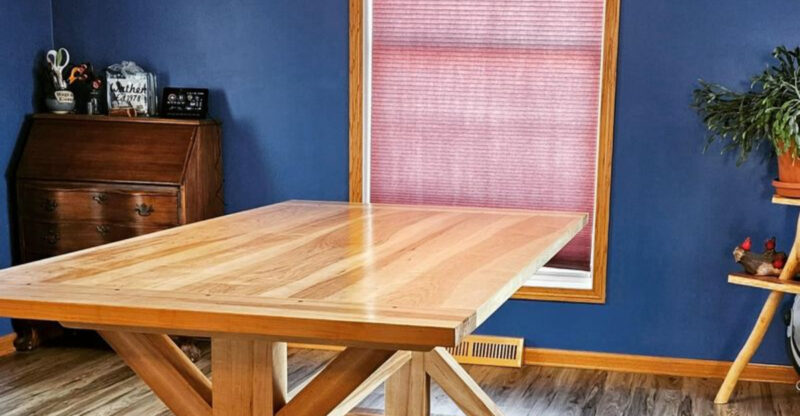Reasons Mini Norfolk Pines Are The Perfect Holiday Tree For Oregon Homes
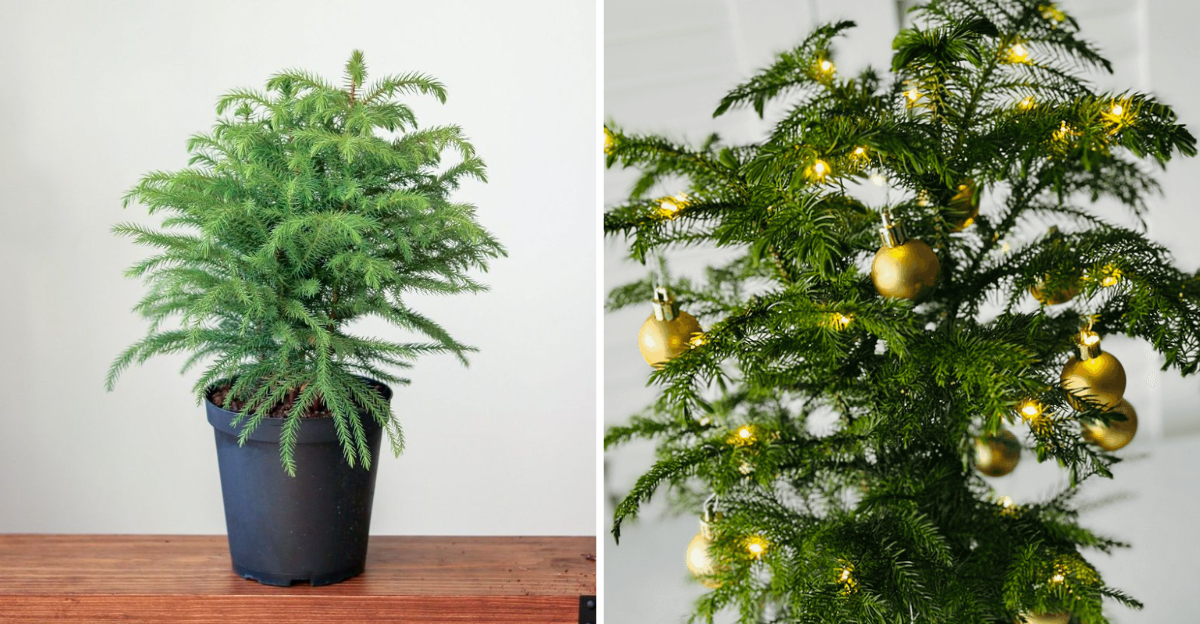
Looking for a holiday tree that fits your Oregon home without taking over your living room? Mini Norfolk Pines might be exactly what you need this season.
These charming little trees bring all the festive spirit of traditional Christmas trees but come with some serious advantages that make them perfect for our Pacific Northwest lifestyle. I’m excited to share why so many Oregon families are choosing these beautiful evergreens as their go-to holiday decoration year after year.
1. Perfect Size for Any Space
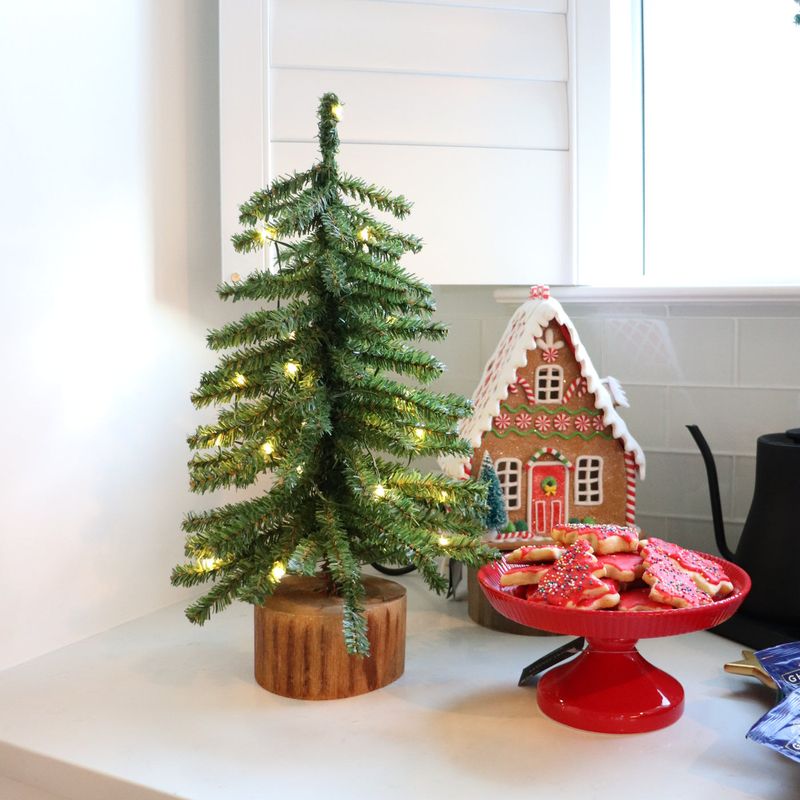
Running out of room during the holidays is something many of us face. Between the decorations, gift piles, and visiting relatives, floor space becomes precious real estate fast. Mini Norfolk Pines solve this problem beautifully because they fit comfortably on tables, countertops, or even bookshelves.
You won’t need to rearrange your entire living room to make space for one. Their compact height means they work perfectly in apartments, small houses, or even office spaces where a full-sized tree would be impossible.
I love how you can place them anywhere you want a touch of holiday cheer. Bedrooms, kitchens, bathrooms, or entryways all become potential spots for festive greenery without feeling cramped or cluttered.
2. Year-Round Green Beauty
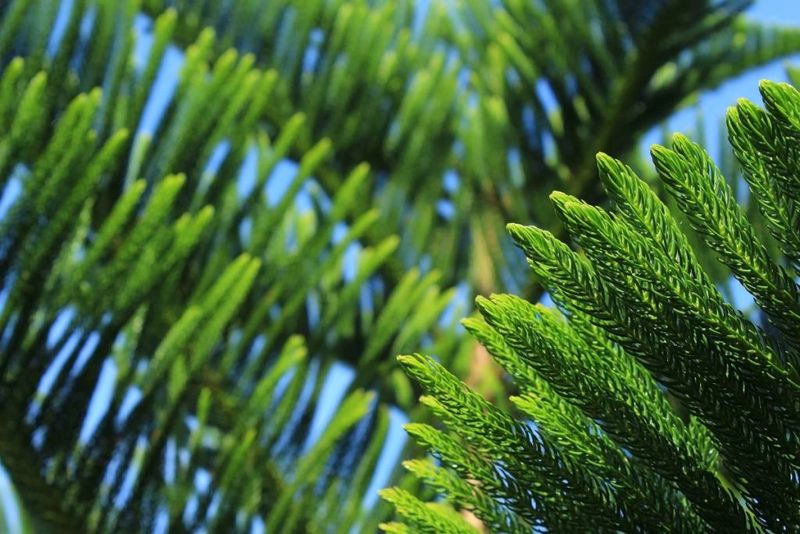
Did you know these trees stay green all year long? Unlike traditional cut trees that dry out and drop needles everywhere, Norfolk Pines keep their gorgeous color through every season. This means your holiday investment keeps giving long after you’ve packed away the ornaments.
The needles stay soft and lush, creating that fresh pine look we all love about Christmas. You’ll never wake up to find a carpet of brown needles under your tree or worry about watering schedules to prevent drying.
When January rolls around, your tree doesn’t become trash. It transforms into a beautiful houseplant that brightens your home with natural greenery, reminding you of forests and nature even during Oregon’s gray winter months.
3. Classic Christmas Tree Shape
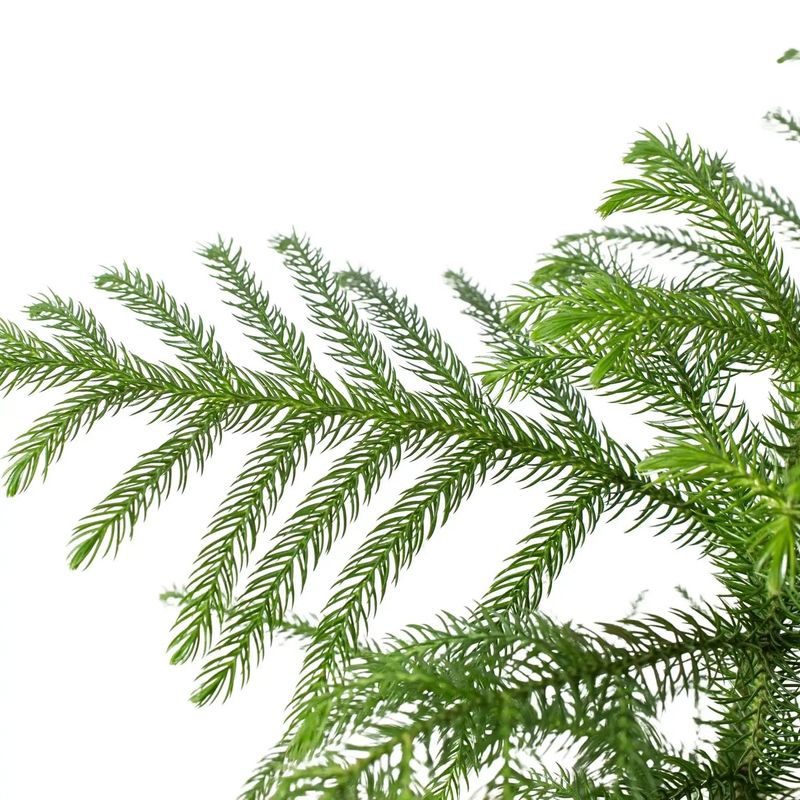
Mother Nature designed these trees with the holidays in mind. Their naturally symmetrical branches grow in perfectly spaced tiers that look just like the Christmas trees we draw as kids. You won’t need to rotate them to find a good side or fill in bare spots with extra decorations.
Each layer of branches creates a distinct level, making ornament placement easy and visually appealing. The pyramid shape gives that classic Christmas silhouette we all recognize and love from holiday cards and movies.
I find this natural beauty refreshing compared to artificial trees that try too hard to look real. Norfolk Pines bring authentic tree charm without the hassle of finding the perfect specimen at a tree lot.
4. Easy Care Requirements
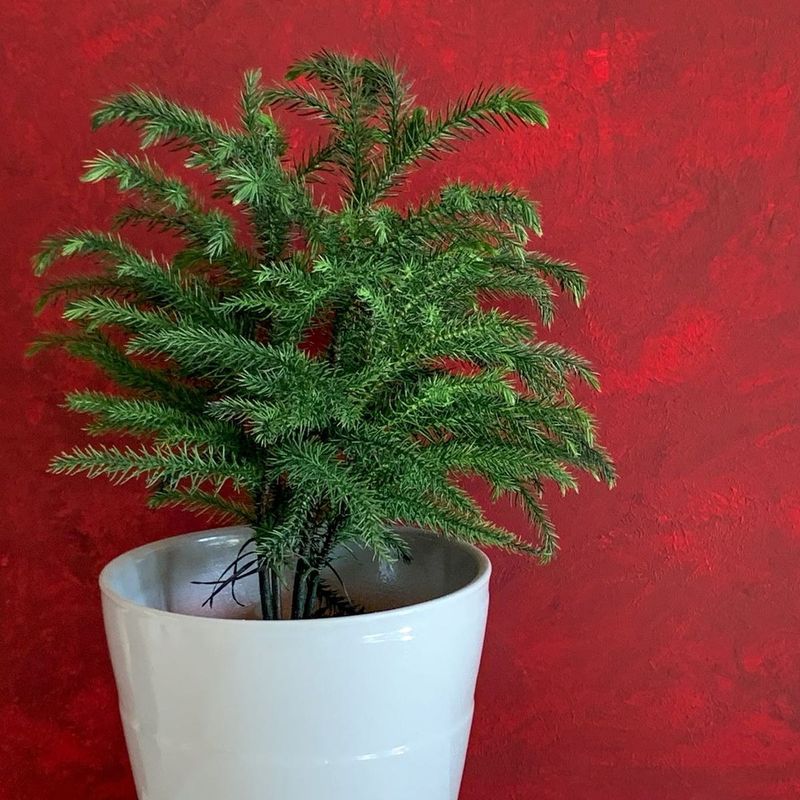
Busy schedules during the holidays leave little time for complicated plant care. Norfolk Pines respect your time by being remarkably low-maintenance compared to other houseplants. They don’t demand constant attention or complicated feeding schedules to stay healthy and attractive.
Pruning is rarely necessary since they grow slowly and maintain their shape naturally. Pests tend to leave them alone, so you won’t be dealing with spider mites or aphids like you might with other indoor plants.
Basic watering when the soil feels dry and occasional light keeps them thriving. I appreciate how forgiving they are when life gets hectic and I forget to check on them for a few days during the holiday rush.
5. Thrives in Oregon Indoor Conditions
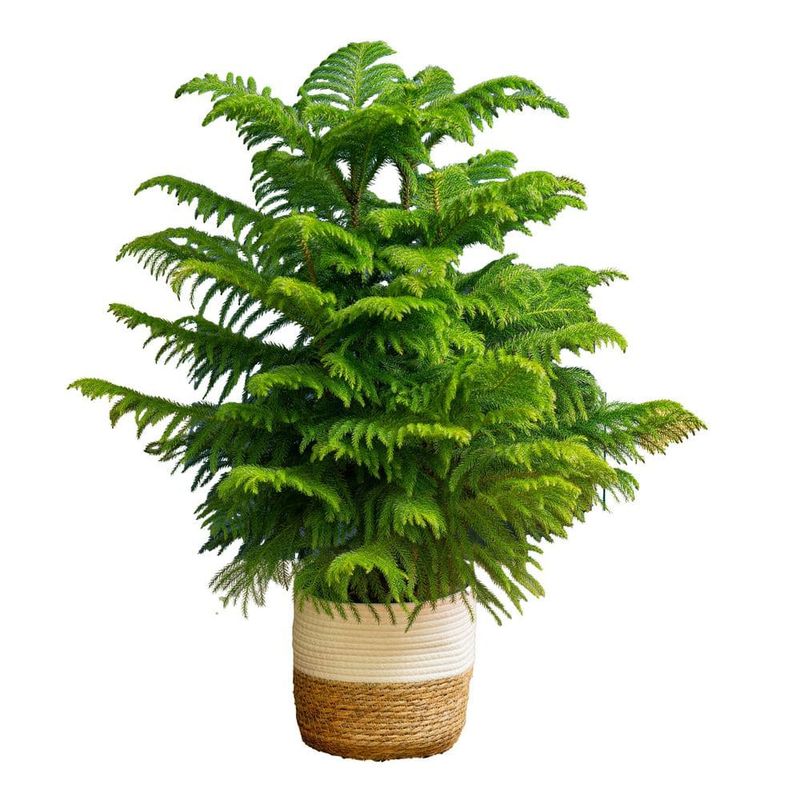
Oregon winters can be tough on outdoor plants, but Norfolk Pines were practically made for indoor living. While traditional Christmas trees struggle in heated homes, these tropical natives adapt beautifully to our indoor environments. They actually prefer being inside during our cold, wet winter months.
The moderate temperatures we keep our homes at match their ideal growing conditions perfectly. You won’t need special equipment or create a greenhouse environment to keep them happy and healthy throughout the season.
I’ve found they handle our typical Oregon home conditions better than many other houseplants. They don’t throw tantrums with sudden leaf drop or browning when the weather outside turns nasty and gray.
6. A Living Holiday Tradition

Imagine decorating the same tree with your family for years to come. Norfolk Pines can live for decades with proper care, growing slowly and becoming a living record of your holiday memories. Each year adds another layer of tradition as your tree matures alongside your family.
Kids can watch their holiday tree grow taller over the years, creating a special connection to nature and the passage of time. You might even start measuring their height against the tree, marking growth for both child and plant.
I think there’s something magical about investing in a tree that becomes part of your family story. Instead of tossing out a cut tree each January, you’re nurturing a living tradition that gains sentimental value with each passing holiday season.
7. Lightweight Decorating Options
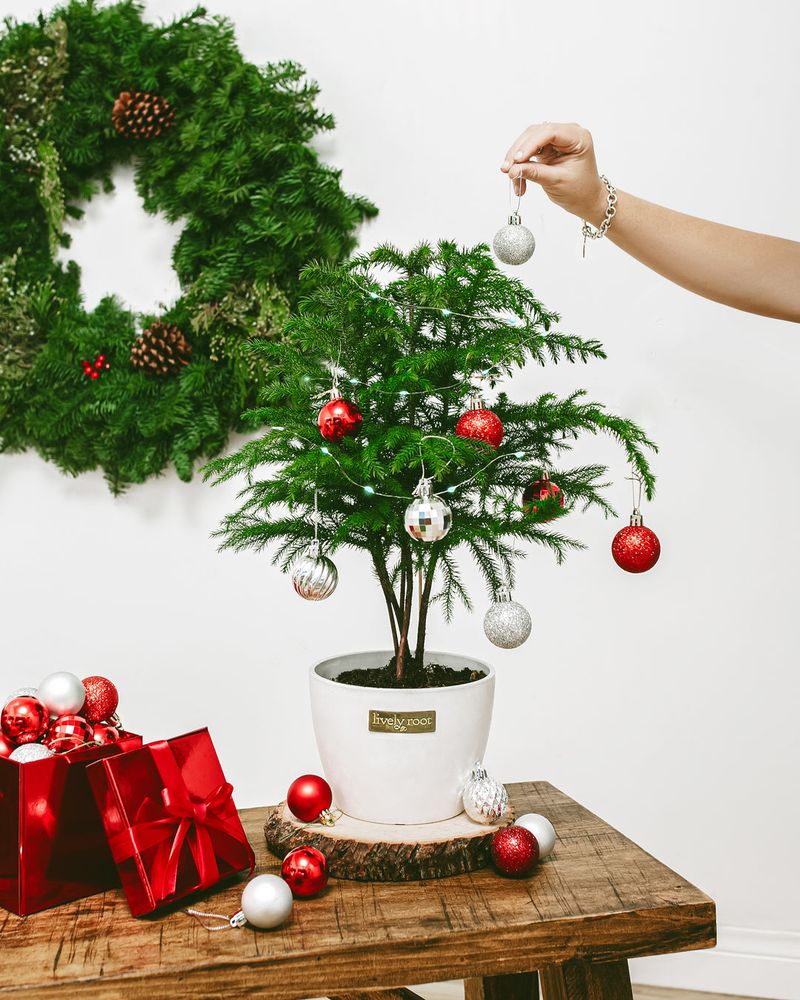
Those soft, flexible branches might look delicate, but they’re perfect for creating your own miniature winter wonderland. You can hang lightweight ornaments, string mini lights, and add small garlands without worrying about breaking branches or making the tree look overcrowded.
The scale of decorations becomes part of the fun. Tiny ornaments, miniature figurines, and delicate ribbon all look adorable on these petite trees, giving you a chance to get creative with decorating in ways full-sized trees don’t allow.
I enjoy hunting for small decorations specifically for my Norfolk Pine each year. It’s become its own tradition, finding unique miniature ornaments that wouldn’t work on a regular tree but look absolutely perfect on this little beauty.
8. Environmentally Friendly Choice

How many Christmas trees have you sent to the landfill over the years? Choosing a living Norfolk Pine dramatically reduces your environmental footprint during the holidays. You’re not contributing to the millions of cut trees that get discarded every January, taking up space in landfills or requiring transportation for disposal.
These trees keep growing and producing oxygen in your home year-round, actively improving your environment rather than becoming waste. The sustainability factor feels good when you’re trying to make more eco-conscious choices for your family.
I appreciate knowing my holiday decoration isn’t creating unnecessary waste. It aligns with Oregon’s environmental values while still letting me enjoy the tradition and beauty of a real tree during the festive season.
9. Natural Air Purification
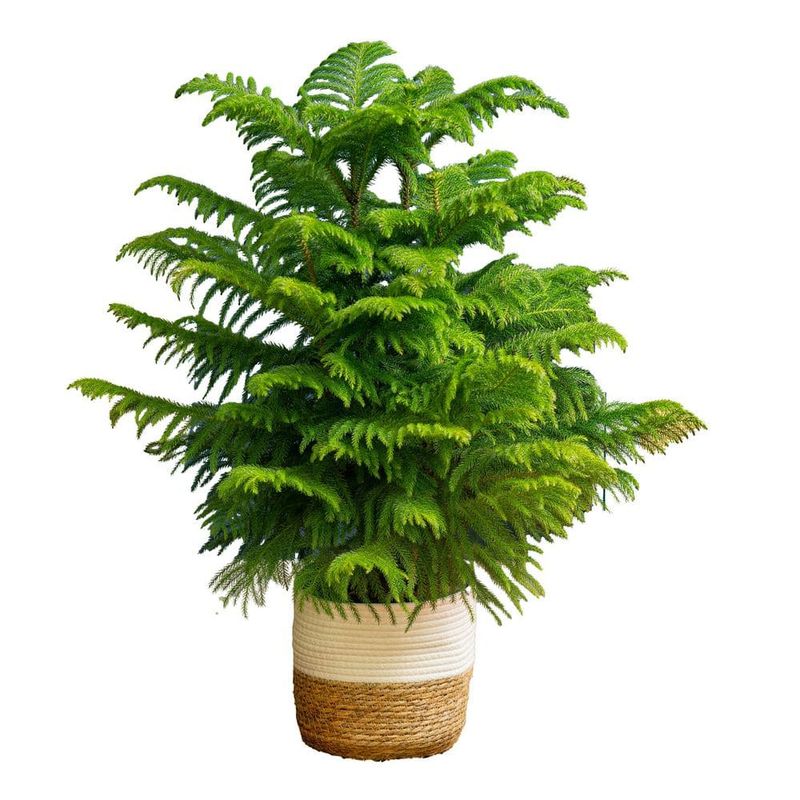
Are you concerned about indoor air quality during winter when windows stay closed? Norfolk Pines work quietly as natural air filters, absorbing pollutants and releasing fresh oxygen into your home. Like many houseplants, they help remove toxins from the air you breathe every day.
During Oregon’s rainy season when we’re sealed indoors for months, having plants that clean the air becomes especially valuable. Your holiday tree doubles as a health benefit, improving the air quality while looking festive and beautiful.
I find it reassuring to know my decorations are actually making my home healthier. Instead of artificial trees that might off-gas chemicals, or cut trees that just sit there, Norfolk Pines actively contribute to a cleaner indoor environment.
10. Humidity Helper for Dry Winters
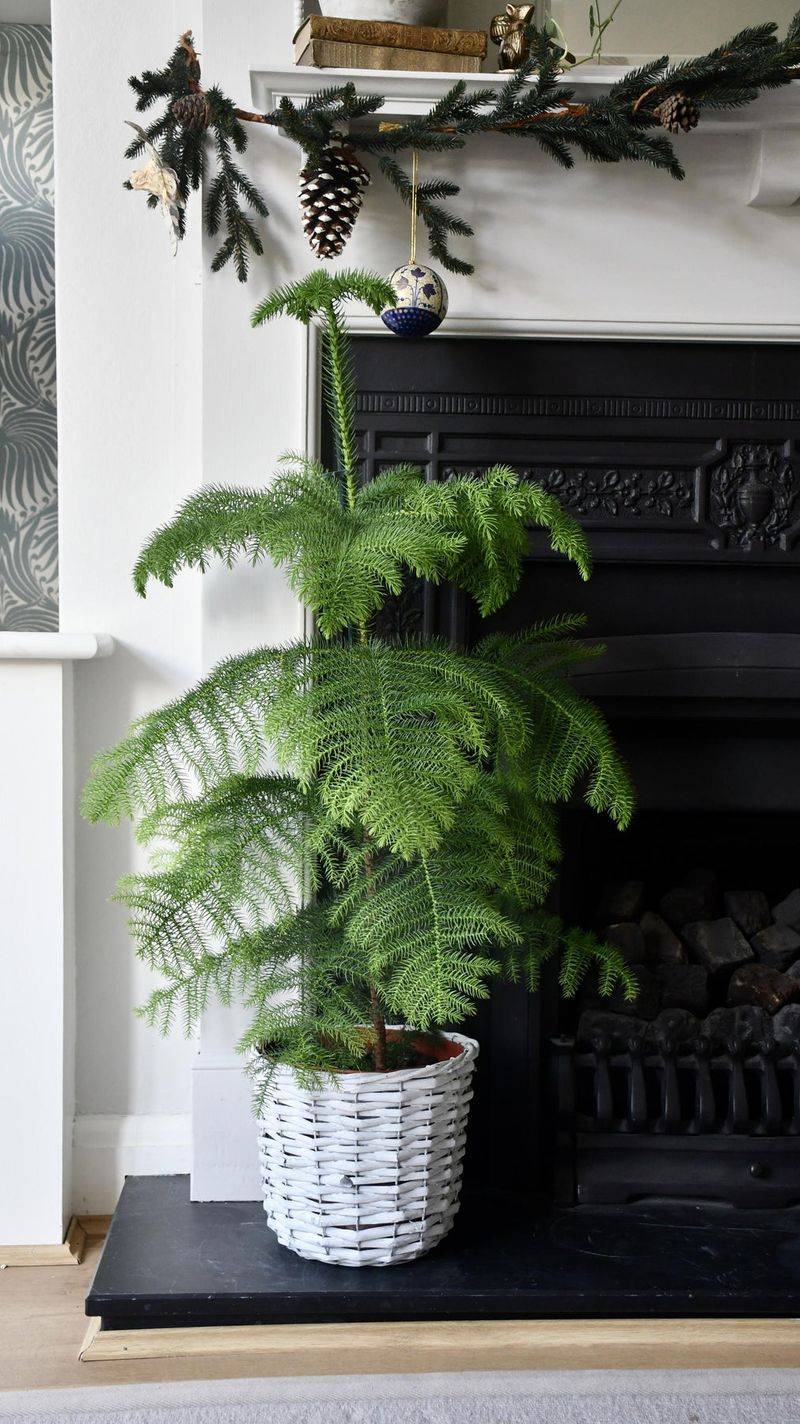
When heating systems kick on during Oregon winters, indoor air becomes uncomfortably dry. Norfolk Pines actually prefer higher humidity, giving you a perfect excuse to add moisture to your home’s air. Misting your tree or placing it on a pebble tray with water benefits both the plant and your family’s comfort.
Dry air causes scratchy throats, dry skin, and irritated sinuses for many people. By caring for your Norfolk Pine’s humidity needs, you’re simultaneously addressing your own comfort during those long winter months indoors.
I started keeping one of these trees specifically because it reminded me to maintain better humidity levels in my home. My skin stopped feeling so dry, and my tree stayed gorgeous, creating a win-win situation for everyone.
11. Ideal Temperature Tolerance
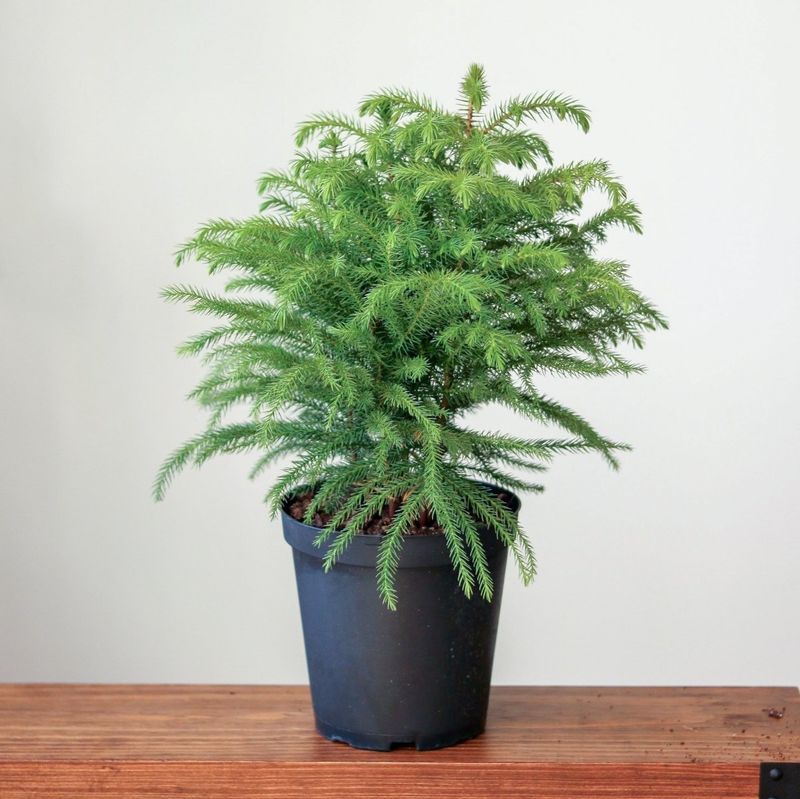
Finding plants that tolerate normal home temperatures can be surprisingly tricky. Norfolk Pines thrive in the exact temperature range most Oregon homes maintain during winter: between 60 and 72 degrees during the day, and slightly cooler at night. You won’t need to adjust your thermostat or create special climate zones.
This temperature preference means they’re comfortable exactly when and where you are. No worrying about cold drafts near windows or hot spots near heating vents affecting your tree’s health during the holidays.
I love that I can place my Norfolk Pine anywhere in my house without temperature concerns. It adapts to the same comfortable conditions my family enjoys, making it a truly easy houseguest throughout the winter season and beyond.
12. Beautiful Beyond the Holidays

What happens when you take down your holiday decorations? While most Christmas trees head to the curb, your Norfolk Pine transitions beautifully into an elegant houseplant that enhances your home’s decor all year. Its tropical appearance adds a touch of exotic beauty that works with any interior design style.
The graceful, layered branches create visual interest and bring nature indoors even during the grayest Oregon months. You’ll find yourself appreciating it in February and March just as much as you did in December, maybe even more.
I actually think mine looks better as an everyday houseplant than it does as a holiday tree. It brings life and greenery to my space year-round, making it one of the best investments I’ve made for my home’s atmosphere and appearance.



